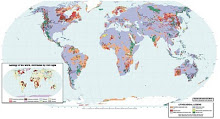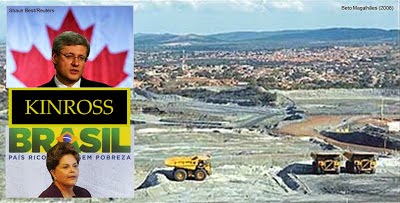Gold, coal and oil: regulatory crisis of sizeable magnitude
Whereas maximum allowed concentrations of arsenic in soils of some
countries such as Canada and Germany range from 5-50 milligrams/kg, in
some places of the world where soils have been contaminated by allowed
gold mining operations – e.g., Paracatu and Nova Lima, Brazil – or by
irrigation with arsenic-contaminated water – e.g. Bangladesh and West
Bengal – soil arsenic concentrations reach several grams/kg, that is,
thousand times the internationally maximal allowed concentrations.
The Paracatu open cut mine is one of the world’s largest and also the
one which produces the largest amounts of arsenic per ton gold. The
Nova Lima underground gold mine is the world’s oldest. There are
thousands of active, inactive or projected gold mines around the world
and gold ores containing arsenic are the most abundant in these mines.
According to estimates by Sergio Dani, a MD, PhD at the Medawar
Institute who authored a study in Medical Hypotheses (Gold, Coal and
Oil, Medical Hypotheses, doi:10.1016/j.mehy.2009.09.047), gold mines
alone have the potential to produce 10-100 kg arsenic for each human
being presently leaving on Earth. When arsenic is released to air,
soil and waters, it can be mobilized in a centennial to millenial time
scale, extending the hazard to future generations.
Among the effects of arsenic on human health, Sergio Dani investigates
Alzheimer’s disease and diverse forms of cognitive losses in
populations chronically exposed to arsenic. “Preliminary evidence
delivers an indication that neurodegenerative conditions such as
Alzheimer’s disease can be caused or aggravated by chronic exposure to
arsenic in concentrations that are already common and increasing in
many parts of the world”, alerts Dani.
Control measures proposed by mining companies do not protect humans
and other vulnerable organisms against arsenic, and decontamination of
soils and both surface and ground waters is economically unfeasible.
Therefore scientists all over the world are of the opinion that the
sole efficient protection measure is to provide free access to
uncontaminated air, soils and waters. However, these health-ensuring
commodities are becoming increasingly scarce at each day, each mine.
The study published in Medical Hypotheses raises the issue of a much
needed worldwide ban on hard rock gold mining and establishment of new
restoration and regulatory standards. If the humanitarian point is not
strong enough, at least there is a weaker, though more convincing
argument: socio-economic, health and environmental costs and
liabilities arising from deliberate arsenic contamination largely
outweigh the values of gold mines such as the Paracatu mine. For
recalcitrating gold companies the news is bad enough. Arsenic has
rendered gold a risky business.
Source: Medawar Institute for Medical and Environmental Research /Acangaú Foundation, October 2009.
Find out more about this story at:
alertaparacatu.blogspot.com
sosarsenic.blogspot.com
--
Sergio Ulhoa Dani, Dr.med., D.Sc. habil.
Göttingen, Germany
Tel. 00(XX)49 15-226-453-423
srgdani@gmail.com
Tuesday, November 3, 2009
Subscribe to:
Post Comments (Atom)




No comments:
Post a Comment